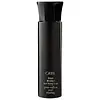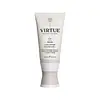What's inside
What's inside
 Key Ingredients
Key Ingredients

 Benefits
Benefits

 Concerns
Concerns

 Ingredients Side-by-side
Ingredients Side-by-side

Cyclopentasiloxane
EmollientIsododecane
EmollientPhenyl Trimethicone
Skin ConditioningBis-Hydroxyethoxypropyl Dimethicone
EmollientBis-Hydroxy/Methoxy Amodimethicone
Parfum
MaskingPolysilicone-15
UV FilterPPG-3 Benzyl Ether Myristate
EmollientSilicone Quaternium-22
PPG-3 Myristyl Ether
EmollientArgania Spinosa Kernel Oil
EmollientPersea Gratissima Oil
Skin ConditioningRosa Canina Fruit Oil
EmollientOryza Sativa Bran Extract
Skin ConditioningHelianthus Annuus Extract
EmollientRosmarinus Officinalis Leaf Extract
AntimicrobialTocopherol
AntioxidantPentaerythrityl Tetra-Di-T-Butyl Hydroxyhydrocinnamate
AntioxidantBenzyl Benzoate
AntimicrobialLimonene
PerfumingHexyl Cinnamal
PerfumingLinalool
PerfumingCitral
PerfumingCyclopentasiloxane, Isododecane, Phenyl Trimethicone, Bis-Hydroxyethoxypropyl Dimethicone, Bis-Hydroxy/Methoxy Amodimethicone, Parfum, Polysilicone-15, PPG-3 Benzyl Ether Myristate, Silicone Quaternium-22, PPG-3 Myristyl Ether, Argania Spinosa Kernel Oil, Persea Gratissima Oil, Rosa Canina Fruit Oil, Oryza Sativa Bran Extract, Helianthus Annuus Extract, Rosmarinus Officinalis Leaf Extract, Tocopherol, Pentaerythrityl Tetra-Di-T-Butyl Hydroxyhydrocinnamate, Benzyl Benzoate, Limonene, Hexyl Cinnamal, Linalool, Citral
Water
Skin ConditioningCyclopentasiloxane
EmollientDimethicone
EmollientGlycerin
HumectantPhenyl Trimethicone
Skin ConditioningDimethiconol
EmollientKeratin
Skin ConditioningPanthenol
Skin ConditioningTocopherol
AntioxidantEthylhexylglycerin
Skin ConditioningPolyacrylamide
Maltodextrin/Vp Copolymer
Pvp
Emulsion StabilisingMaltodextrin
AbsorbentAmmonium Acryloyldimethyltaurate/Vp Copolymer
Parfum
MaskingOleth-10
EmulsifyingC13-14 Isoparaffin
EmollientOleth-20
CleansingLaureth-7
EmulsifyingPhenoxyethanol
PreservativeChlorphenesin
AntimicrobialCyclohexasiloxane
EmollientLimonene
PerfumingLinalool
PerfumingBenzyl Salicylate
PerfumingCitronellol
PerfumingCitral
PerfumingEugenol
PerfumingWater, Cyclopentasiloxane, Dimethicone, Glycerin, Phenyl Trimethicone, Dimethiconol, Keratin, Panthenol, Tocopherol, Ethylhexylglycerin, Polyacrylamide, Maltodextrin/Vp Copolymer, Pvp, Maltodextrin, Ammonium Acryloyldimethyltaurate/Vp Copolymer, Parfum, Oleth-10, C13-14 Isoparaffin, Oleth-20, Laureth-7, Phenoxyethanol, Chlorphenesin, Cyclohexasiloxane, Limonene, Linalool, Benzyl Salicylate, Citronellol, Citral, Eugenol
Ingredients Explained
These ingredients are found in both products.
Ingredients higher up in an ingredient list are typically present in a larger amount.
Citral is a fragrance and used to add a lemon-like scent to products. It is both naturally found in plants and created synthetically. In plants, it is commonly occurring in lemon myrtle, lemongrass, lemon tea-tree, lemon verbena, and other citruses.
The EU mandates Citral be listed separately as a fragrance. It is a known allergen and may cause contact dermatitis. Citral can also used as a masking ingredient.
The term 'fragrance' is not regulated in many countries. In many cases, it is up to the brand to define this term. For instance, many brands choose to label themselves as "fragrance-free" because they are not using synthetic fragrances. However, their products may still contain ingredients such as essential oils that are considered a fragrance.
The term 'citral' is a collective term for two geometric isomers: geranial/Citral A and neral/Citral B.
Learn more about CitralCyclopentasiloxane, or D5, is a silicone used to improve texture of products and trap moisture.
D5 is considered lightweight and volatile. Volatile means it evaporates quickly after application. Once evaporated, D5 leaves a thin barrier that helps keep skin hydrated.
It is also an emollient. Emollients help soften the skin and prevent water loss. Silicones create a silky texture in products. D5 helps other ingredients become more spreadable.
Studies show D5 is safe to use in skincare products. We recommend speaking with a skincare professional if you have concerns.
Learn more about CyclopentasiloxaneLimonene is a fragrance that adds scent and taste to a formulation.
It's found in the peel oil of citrus fruits and other plants such as lavender and eucalyptus. The scent of limonene is generally described as "sweet citrus".
Limonene acts as an antioxidant, meaning it helps neutralize free radicals.
When exposed to air, oxidized limonene may sensitize the skin. Because of this, limonene is often avoided by people with sensitive skin.
The term 'fragrance' is not regulated in many countries. In many cases, it is up to the brand to define this term. For instance, many brands choose to label themselves as "fragrance-free" because they are not using synthetic fragrances. However, their products may still contain ingredients such as essential oils that are considered a fragrance.
Learn more about LimoneneLinalool is a fragrance and helps add scent to products. It's derived from common plants such as cinnamon, mint, citrus, and lavender.
Like Limonene, this ingredient oxidizes when exposed to air. Oxidized linalool can cause allergies and skin sensitivity.
This ingredient has a scent that is floral, spicy tropical, and citrus-like.
Learn more about LinaloolParfum is a catch-all term for an ingredient or more that is used to give a scent to products.
Also called "fragrance", this ingredient can be a blend of hundreds of chemicals or plant oils. This means every product with "fragrance" or "parfum" in the ingredients list is a different mixture.
For instance, Habanolide is a proprietary trade name for a specific aroma chemical. When used as a fragrance ingredient in cosmetics, most aroma chemicals fall under the broad labeling category of “FRAGRANCE” or “PARFUM” according to EU and US regulations.
The term 'parfum' or 'fragrance' is not regulated in many countries. In many cases, it is up to the brand to define this term.
For instance, many brands choose to label themselves as "fragrance-free" because they are not using synthetic fragrances. However, their products may still contain ingredients such as essential oils that are considered a fragrance by INCI standards.
One example is Calendula flower extract. Calendula is an essential oil that still imparts a scent or 'fragrance'.
Depending on the blend, the ingredients in the mixture can cause allergies and sensitivities on the skin. Some ingredients that are known EU allergens include linalool and citronellol.
Parfum can also be used to mask or cover an unpleasant scent.
The bottom line is: not all fragrances/parfum/ingredients are created equally. If you are worried about fragrances, we recommend taking a closer look at an ingredient. And of course, we always recommend speaking with a professional.
Learn more about ParfumPhenyl Trimethicone is a silicon-based polymer. It is derived from silica.
Phenyl Trimethicone is used as an emollient and prevents products from foaming.
As an emollient, it helps trap moisture in the skin. It is considered an occlusive.
Learn more about Phenyl TrimethiconeTocopherol (also known as Vitamin E) is a common antioxidant used to help protect the skin from free-radicals and strengthen the skin barrier. It's also fat soluble - this means our skin is great at absorbing it.
Vitamin E also helps keep your natural skin lipids healthy. Your lipid skin barrier naturally consists of lipids, ceramides, and fatty acids. Vitamin E offers extra protection for your skin’s lipid barrier, keeping your skin healthy and nourished.
Another benefit is a bit of UV protection. Vitamin E helps reduce the damage caused by UVB rays. (It should not replace your sunscreen). Combining it with Vitamin C can decrease sunburned cells and hyperpigmentation after UV exposure.
You might have noticed Vitamin E + C often paired together. This is because it is great at stabilizing Vitamin C. Using the two together helps increase the effectiveness of both ingredients.
There are often claims that Vitamin E can reduce/prevent scarring, but these claims haven't been confirmed by scientific research.
Learn more about Tocopherol